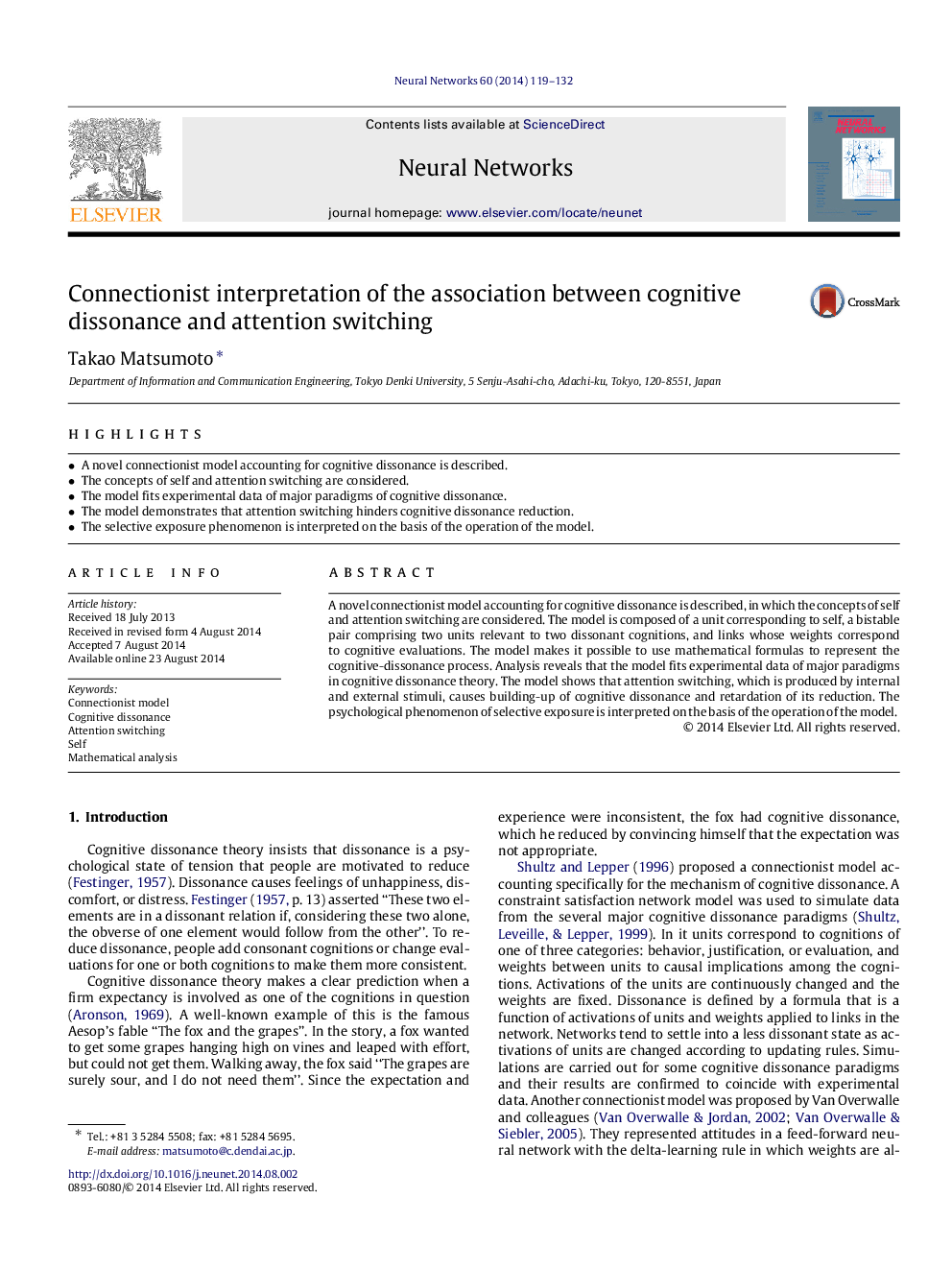| Article ID | Journal | Published Year | Pages | File Type |
|---|---|---|---|---|
| 406172 | Neural Networks | 2014 | 14 Pages |
•A novel connectionist model accounting for cognitive dissonance is described.•The concepts of self and attention switching are considered.•The model fits experimental data of major paradigms of cognitive dissonance.•The model demonstrates that attention switching hinders cognitive dissonance reduction.•The selective exposure phenomenon is interpreted on the basis of the operation of the model.
A novel connectionist model accounting for cognitive dissonance is described, in which the concepts of self and attention switching are considered. The model is composed of a unit corresponding to self, a bistable pair comprising two units relevant to two dissonant cognitions, and links whose weights correspond to cognitive evaluations. The model makes it possible to use mathematical formulas to represent the cognitive-dissonance process. Analysis reveals that the model fits experimental data of major paradigms in cognitive dissonance theory. The model shows that attention switching, which is produced by internal and external stimuli, causes building-up of cognitive dissonance and retardation of its reduction. The psychological phenomenon of selective exposure is interpreted on the basis of the operation of the model.
